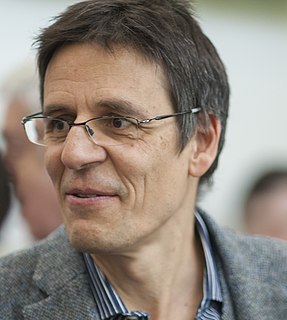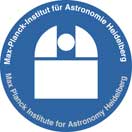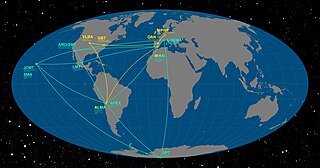
Astronomy is a natural science that studies celestial objects and phenomena. It uses mathematics, physics, and chemistry in order to explain their origin and evolution. Objects of interest include planets, moons, stars, nebulae, galaxies, and comets. Relevant phenomena include supernova explosions, gamma ray bursts, quasars, blazars, pulsars, and cosmic microwave background radiation. More generally, astronomy studies everything that originates beyond Earth's atmosphere. Cosmology is a branch of astronomy that studies the universe as a whole.
Astrophysics is a science that employs the methods and principles of physics in the study of astronomical objects and phenomena. Among the subjects studied are the Sun, other stars, galaxies, extrasolar planets, the interstellar medium and the cosmic microwave background. Emissions from these objects are examined across all parts of the electromagnetic spectrum, and the properties examined include luminosity, density, temperature, and chemical composition. Because astrophysics is a very broad subject, astrophysicists apply concepts and methods from many disciplines of physics, including classical mechanics, electromagnetism, statistical mechanics, thermodynamics, quantum mechanics, relativity, nuclear and particle physics, and atomic and molecular physics.

Cecilia Helena Payne-Gaposchkin was a British-born American astronomer and astrophysicist who proposed in her 1925 doctoral thesis that stars were composed primarily of hydrogen and helium. Her groundbreaking conclusion was initially rejected because it contradicted the scientific wisdom of the time, which held that there were no significant elemental differences between the Sun and Earth. Independent observations eventually proved she was correct.

Michel Gustave Édouard Mayor is a Swiss astrophysicist and professor emeritus at the University of Geneva's Department of Astronomy. He formally retired in 2007, but remains active as a researcher at the Observatory of Geneva. He is co-laureate of the 2019 Nobel Prize in Physics along with Jim Peebles and Didier Queloz, and the winner of the 2010 Viktor Ambartsumian International Prize and the 2015 Kyoto Prize.

Didier Patrick Queloz is a Swiss astronomer. He is a Jacksonian Professor of Natural Philosophy at the University of Cambridge, where he is also a fellow of Trinity College, Cambridge, as well as a professor at the University of Geneva. Together with Michel Mayor in 1995, he discovered 51 Pegasi b, the first extrasolar planet orbiting a sun-like star, 51 Pegasi. For this discovery, he shared the 2019 Nobel Prize in Physics with James Peebles and Michel Mayor. He is designate director of the new Center for the Origin and Prevalence of Life at ETH Zurich.

The Center for Astrophysics | Harvard & Smithsonian (CfA) is an astrophysics research institute jointly operated by the Harvard College Observatory and Smithsonian Astrophysical Observatory. Founded in 1973 and headquartered in Cambridge, Massachusetts, the CfA leads a broad program of research in astronomy, astrophysics, Earth and space sciences, as well as science education. The CfA either leads or participates in the development and operations of more than fifteen ground- and space-based astronomical research observatories across the electromagnetic spectrum, including the forthcoming Giant Magellan Telescope (GMT) and the Chandra X-ray Observatory, one of NASA's Great Observatories.

The Max-Planck-Institut für Astronomie is a research institute of the Max Planck Society (MPG). It is located in Heidelberg, Baden-Württemberg, Germany near the top of the Königstuhl, adjacent to the historic Landessternwarte Heidelberg-Königstuhl astronomical observatory. The institute primarily conducts basic research in the natural sciences in the field of astronomy.
Solar physics is the branch of astrophysics that specializes in the study of the Sun. It deals with detailed measurements that are possible only for our closest star. It intersects with many disciplines of pure physics, astrophysics, and computer science, including fluid dynamics, plasma physics including magnetohydrodynamics, seismology, particle physics, atomic physics, nuclear physics, stellar evolution, space physics, spectroscopy, radiative transfer, applied optics, signal processing, computer vision, computational physics, stellar physics and solar astronomy.

David W. Hughes was a professor of astronomy at the University of Sheffield, where he worked since 1965. Hughes has published over 200 research papers on asteroids, comets, meteorites and meteoroids. He has also written on the history of astronomy, the origin of the Solar System and the impact threat to planet Earth.

The Department of Physics at Durham University in Durham, England, is a physics and astronomy department involved in both undergraduate and postgraduate teaching and scientific research.

Muhammad Shahid Qureshi or Shahid Qureshi, styled as M. Shahid Qureshi, is a Pakistani mathematician, astrophysicist and a renowned astronomer. He is an academic and an eminent educationist from Pakistan who has published articles in the fields of astrophysics and astronomy. He is the retired professor of astrophysics and astronomy at Karachi University and Institute of Space and Planetary Astrophysics (ISPA), and former director of ISPA, the country's prominent institution in the field of planetary astrophysics and planetary astronomy. He previously served as an assistant professor of mathematics and computer science. He also the founding director of the Department of Mathematics at Institute of Business Administration, Karachi.

Thomas K. Henning is a German astrophysicist. Since 2001, he is a director at the Max Planck Institute for Astronomy. Henning is an expert in the field of star and planet formation.

The Event Horizon Telescope (EHT) is a large telescope array consisting of a global network of radio telescopes. The EHT project combines data from several very-long-baseline interferometry (VLBI) stations around Earth, which form a combined array with an angular resolution sufficient to observe objects the size of a supermassive black hole's event horizon. The project's observational targets include the two black holes with the largest angular diameter as observed from Earth: the black hole at the center of the supergiant elliptical galaxy Messier 87 (M87), and Sagittarius A* at the center of the Milky Way.

Kevin Schawinski is a Swiss astrophysicist. He was a professor at ETH Zurich in Zürich.
Mercedes Tharam Richards, née Davis, was a Jamaican astronomy and astrophysics professor. Her investigation focused on computational astrophysics, stellar astrophysics and exoplanets and brown dwarfs, and the physical dynamics of interacting binary stars systems. However, her pioneering research in the tomography of interacting binary star systems and cataclysmic variable stars to predict magnetic activity and simulate gas flow is her most known work.
Andrew Collier Cameron is a British astronomer specialising in the discovery and characterisation of exoplanets. He is a founding co-investigator of the WASP project and served as the head of the School of Physics and Astronomy of the University of St Andrews between 2012 and 2015 where he is currently a professor.
Serena Viti is a Professor at Leiden University and previously was a Professor and the head of Astrophysics at University College London. In March 2019 she received an ERC Advanced Grant for her MOPPEX proposal.
Stephen Eales is a professor of astrophysics at Cardiff University, where he is currently head of the Astronomy Group. In 2015, he was awarded the Herschel Medal from the Royal Astronomical Society for outstanding contributions to observational astrophysics. He also writes articles and books about astronomy.
Peter Thomas Gallagher is an Irish astrophysicist. He specialises in solar physics, notably solar storms and their impact on the Earth. He is Senior Professor, and Head of Astronomy and Astrophysics, at the Dublin Institute for Advanced Studies, director of Dunsink Observatory, and an adjunct professor at Trinity College Dublin. He is also the head of the radio-telescope project I-LOFAR, at Birr Castle. He is widely cited in his field and often quoted in the media.












